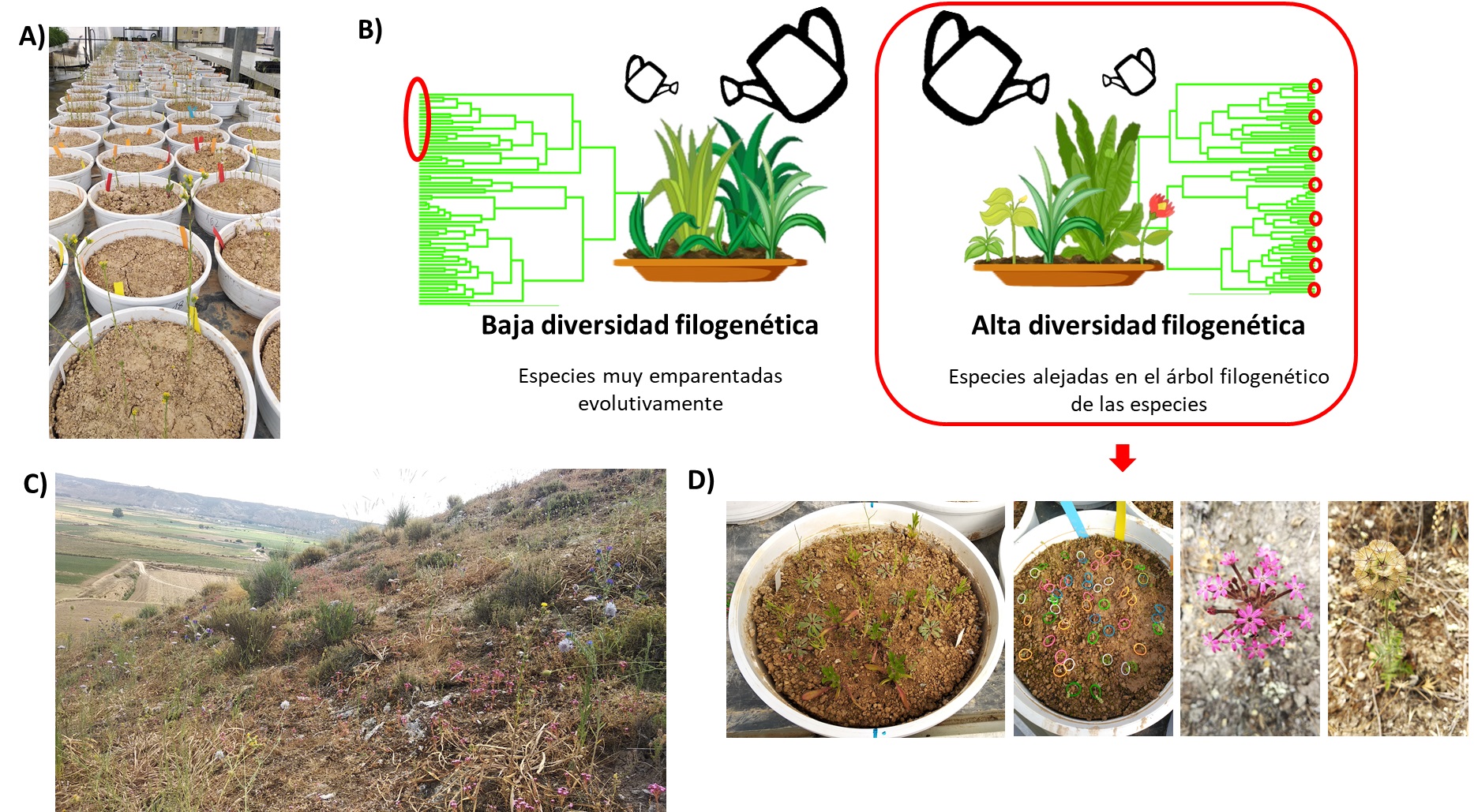Abel Verard / Irene Vega
Mediterranean gypsum are ecosystems that are characterized by having difficult conditions for plant growth. Despite this, they have a high diversity and density of annual plants. Thus, surprisingly, a great variety of plants coexist under restrictive environmental conditions.
To give an explanation, the scientific team of the URJC and the Botanical Institute of the UCLM has thoroughly investigated this phenomenon. In such a way that it has found that plants that are surrounded by a wide phylogenetic plurality, that is, by neighbors different from them from the evolutionary point of view, reproduce and survive better than those whose components are related. Likewise, these communities formed by species far from each other respond better to drought conditions.
As explained by the URJC researcher Rocío Chaves Jiménez, "the novelty of this study lies in its experimental approach", since, to date, only observational research has been carried out, which, although it has provided very valuable information, does not allow clarify unequivocally whether phylogenetic diversity in the set of coexisting species is a cause or a consequence of the processes of community formation.
“The controlled manipulation of diversity offers a particularly effective way to identify the key mechanisms involved in the organization of biological communities”, adds the researcher. Thus, for the study, a common garden experiment was designed in which two types of gypsum-steppe annual plant communities—high vs. low phylogenetic diversity—were created by planting combinations of species selected based on their position in the phylogenetic tree of the community.
Communities with low phylogenetic diversity were made up of seven evolutionarily closely related species. On the other hand, for the communities with high phylogenetic diversity, seven species distant from each other in the phylogenetic tree were chosen. Both communities were subjected to two types of irrigation treatment: control and drought.
During the development of the study, the number of surviving individuals and flowering individuals were regularly counted, as well as those that came to bear mature fruit. Finally, as the researcher points out, "the data on the number of surviving individuals, per species and per pot, the number of surviving species per pot, the number of individuals in flower and the number of individuals that produced fruit" were analysed.
New mechanisms for the development of species conservation plans
The results obtained, recently published in the prestigious scientific journal Scientific Reports, show greater survival and reproductive success in the different combinations, that is, when the plants live surrounded by neighbors that are evolutionarily distant. These differences, moreover, were accentuated in drought. All this points to the ecological complementarity between species as the main organization mechanism of these communities and suggests that a high diversity can favor the success of individuals and the group under limiting conditions for plant life. This fact should be considered when designing restoration and conservation plans in the Iberian gypsum steppes, especially under climate change predictions.




